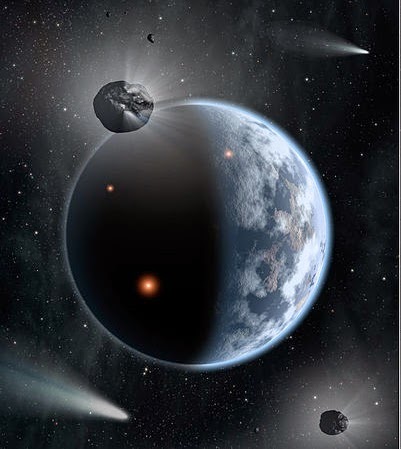All Things

- What Is Life?
Saccharomyces cerevisiaeAfter a century discussing about the origin of life, we are not closer to knowing what did happen. In the mid-twentieth century, when Stanley Lloyd Miller performed the famous experiment where he applied energy to a mixture of...
- The Mystery Of The Cambrian Explosion
Opabinia550 million years ago, during the Cambrian period, animals appear suddenly in the fossil record. This spectacular phenomenon has been given the name of Cambrian explosion. Why did it happen then, and not before, has been, for over a century, one...
- The Fine Tuning Problem
In two previous posts I dealt with the relation between the multiverse theories and the problem of fine tuning, noting that those theories do not solve the problem. This third post describes briefly what is the fine tuning problem. Brandon CarterIn 1973...
- The Probability Of Existence Of Extra-terrestrial Intelligence
Normal statistical distribution. The text makes reference to a uniform statistical distribution.Probability is a well-known mathematical concept that was initially defined to quantify random data in mathematically known environments and has been extended...
- What Is Man?
Since about one century ago, after the consolidation of evolutionist theories, and getting from them philosophical consequences without a scientific basis, many biologists assert that man is an animal like any other, one between millions of species of...
All Things
The origin of life in other worlds

In a recent article published in the Annals of the National Academy of Sciences of the United States of America, Christopher McKay analyzes the requirements and limits for life in other worlds. Since we have no data at all about any concrete planet outside the Solar System, and very few about the planets and satellites in our system, apart from the Earth, the study focuses on the limits for life in our world and tries to extrapolate the results to the possible existence of extraterrestrial life.
Thus, for instance, he notices that on Earth there are extremophile organisms, able to survive in environments apparently hostile for life: between -15 and 122ºC; in conditions of extreme dryness; in an almost total absence of light (100.000 times less than the solar flux we use to receive); in the presence of ultraviolet rays and ionizing radiation...
The title of the article, Requirements and limits for life in the context of exoplanets, suggests that two different problems must be separated:
· Which are the minimal conditions (requirements) for the origin of life in an environment where there was no previous life?
· Which are the minimal conditions (limits) so that life, once originated, can continue existing?
McKay signals in his article that his analysis focuses mainly on the second question. The first has no answer, apart from generalities such as the presence of carbon and liquid water, since we don?t even know how life originated on Earth, therefore cannot extrapolate to other worlds. This is so because it is possible that life requires strict conditions to appear, but once originated it may be able to resist far more unfavorable conditions.
McKay justifies mixing both problems in the title because our understanding of the origin of life is speculative and so we can only assume that planets that have a diversity of habitable environments are also generative of life.
It is good when the conditions of the problem are well stated. When scientific news of this kind appear in global media, where sensationalism takes precedence, the headlines (and sometimes the text itself) usually give a completely mistaken idea.
The same post in Spanish
The same post in Spanish
Manuel Alfonseca
- What Is Life?
Saccharomyces cerevisiaeAfter a century discussing about the origin of life, we are not closer to knowing what did happen. In the mid-twentieth century, when Stanley Lloyd Miller performed the famous experiment where he applied energy to a mixture of...
- The Mystery Of The Cambrian Explosion
Opabinia550 million years ago, during the Cambrian period, animals appear suddenly in the fossil record. This spectacular phenomenon has been given the name of Cambrian explosion. Why did it happen then, and not before, has been, for over a century, one...
- The Fine Tuning Problem
In two previous posts I dealt with the relation between the multiverse theories and the problem of fine tuning, noting that those theories do not solve the problem. This third post describes briefly what is the fine tuning problem. Brandon CarterIn 1973...
- The Probability Of Existence Of Extra-terrestrial Intelligence
Normal statistical distribution. The text makes reference to a uniform statistical distribution.Probability is a well-known mathematical concept that was initially defined to quantify random data in mathematically known environments and has been extended...
- What Is Man?
Since about one century ago, after the consolidation of evolutionist theories, and getting from them philosophical consequences without a scientific basis, many biologists assert that man is an animal like any other, one between millions of species of...
